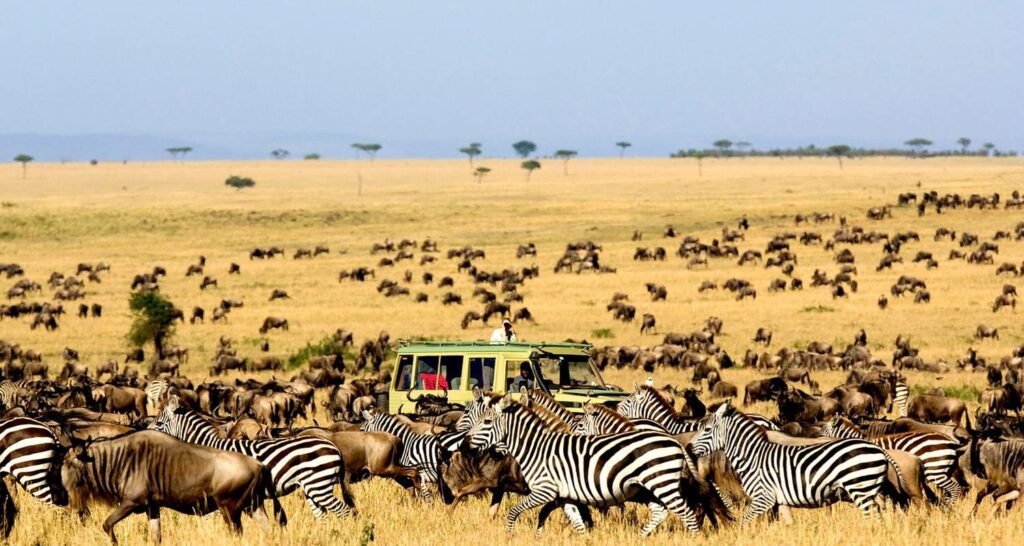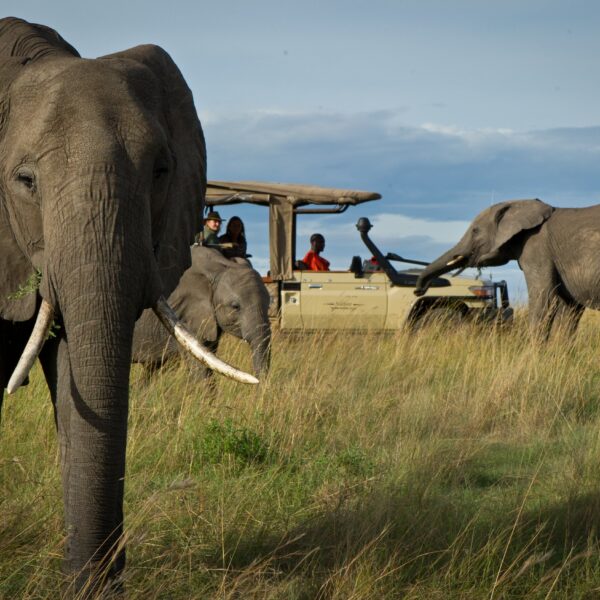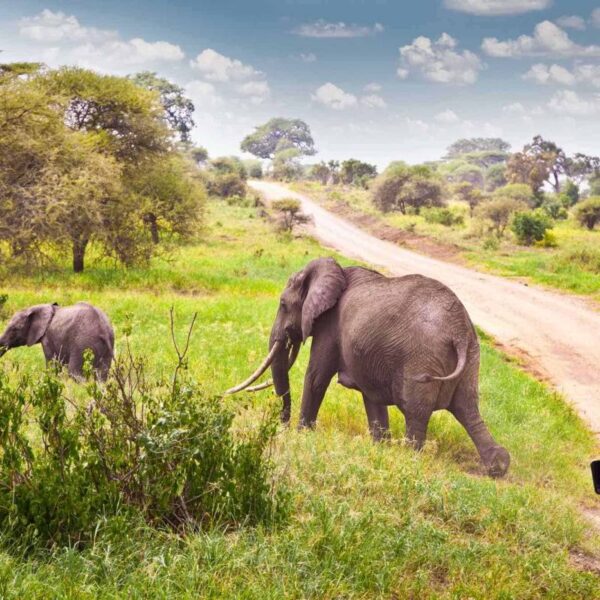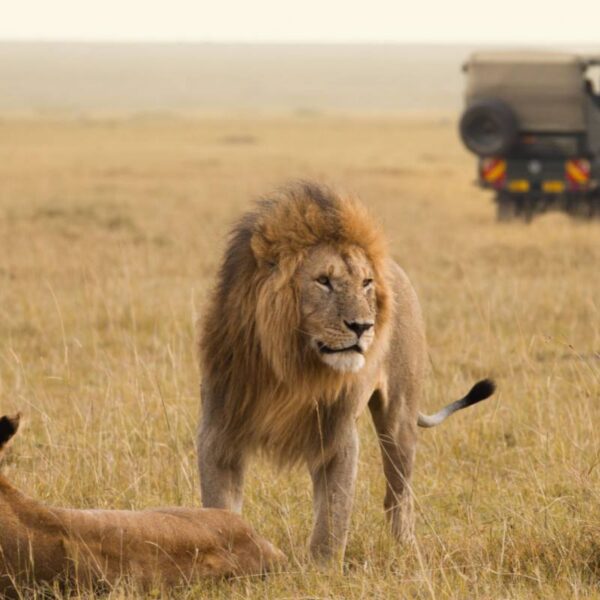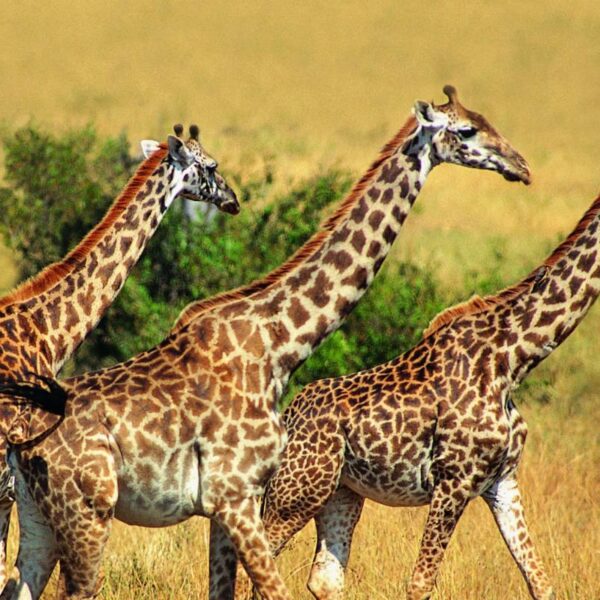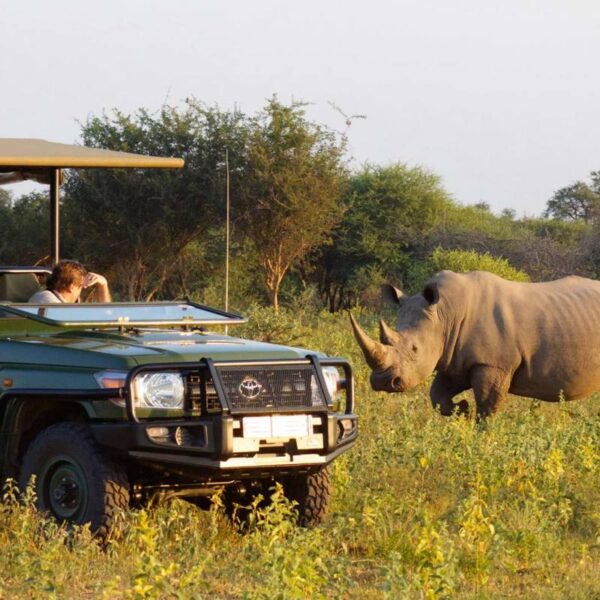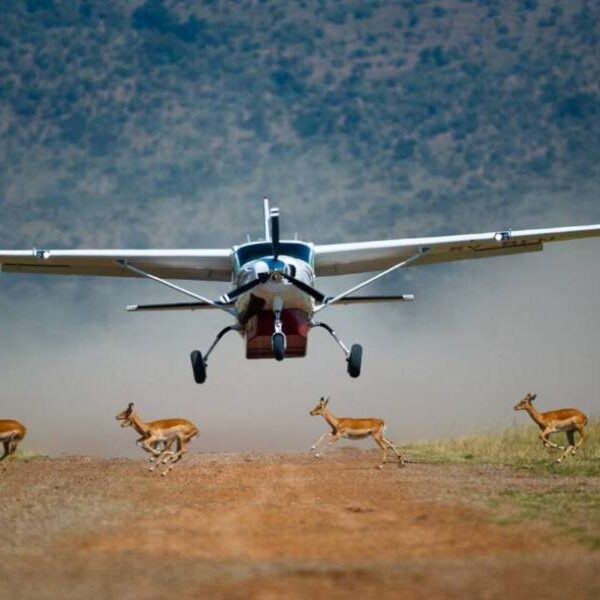Ngorongoro Crater & Conservation Area is a UNESCO World Heritage site and an International Biosphere Reserve., covering almost 8,300 Sq. Kilometers with altitudes ranging between 1,020 meters and 3,577 meters. Often referred to as the eighth wonder of the world, the Ngorongoro Conservation area encompasses blend of landscapes, archeological sites, people and abundant Wildlife that is unsurpassed in Africa. Featuring Volcanoes, grasslands, waterfalls and forests, it’s also home to the nomadic Maasai people.
Ngorongoro Crater – Tanzania
Explore Ngorongoro Crater
The major attraction of the greater Ngorongoro Conservation area is the breath-taking Ngorongoro Crater. A natural amphitheater surrounded by steep walls rising over 600 meters from the crater floor. The Ngorongoro Crater is one of the world’s greatest natural spectacles whose magical setting and plentiful wildlife never fail to thrill.
The crater is a natural sanctuary to more than 30,000 animals the “Big five” – Lion, Rhino, Buffalo, Elephant and Leopard. Ngorongoro crater is also home to the Cheetah, Hartebeest, Hippo, Jackals, Hyenas, Zebras, Wildebeest and other animal, bird and insect species. Reedbuck, Waterbuck and huge herds of Thomson and Grants gazelle are easily seen on the crater floor. With concerted conservation efforts, the Black Rhino population has also increased and they are now easily spotted on the carter floor. Within close proximity of the Ngorongoro Crater, are two less known Craters, ideal for walking and hiking safaris in Tanzania.
The Empakai Crater, which is about 6 Kilometers wide with steep walls rising to almost 300 Meters. Nearly half of the carter floor is covered by deep salt water lake. The trail down the crater floor offers spectacular views of a still active volcano, Oldonyo Lengai and on a clear day, the snowy peaks of Mount Kilimanjaro.
Olduvai Gorge – Ngorongoro Conservation Area
Olduvai is also an iconic site for the studies of human origins located within the Ngorongoro Conservation area. The Olduvai Gorge is short drive off the main road between Ngorongoro and Serengeti. It was at the Olduvai Gorge that in 1959, Dr. Louise Leakey and his wife Mary discovered the 1.7 Million year-old skull of Australopithecus boisei, the modern Man and the remains of Homo Habilis – The Handy Man at that time regarded as mankind’s first step up the ladder of human evolution. Many more fossils have since been discovered including those of prehistoric Elephants, giant horned sheep and enormous Ostriches.
Visiting Ngorongoro Crater
- Ngorongoro Crater is 180 Kilometers from Arusha
- The drive to Ngorongoro Crater entrance takes about 3 Hours from Arusha and 90 minutes from Lake Manyara
- It’s an hour flight from Arusha Airport

